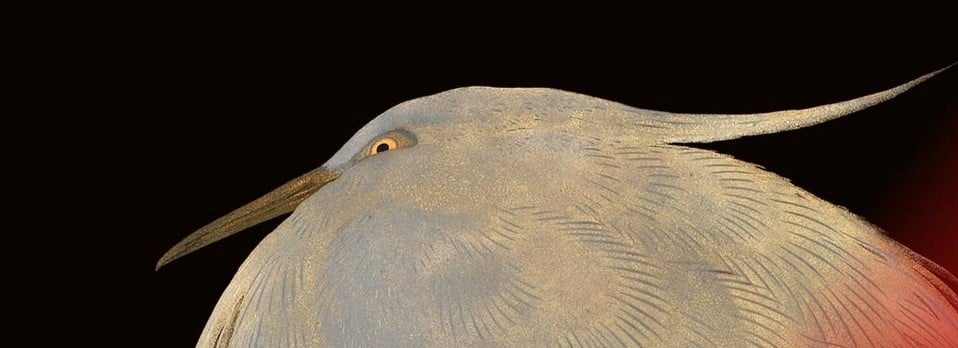
Short sword (wakizashi) and scabbard
blade 1600-1700; mounts 1700-1800Steel, gold, shakudo, rayskin, silk, lacquer | 6.5 cm (Width) x 6.5 cm (Depth); 68.0 cm (Length) (whole object) | RCIN 62627
Short sword (wakizashi) paired with a long sword (katana, RCIN 72786) to form a daishō.
In the Momoyama period (1573–1615), paired swords became more prevalent and it was around this time that the fashion for daishō mounted as a matched pair became fully established. The metal fittings of the swords were often decorated with a regular theme or design. Only the samurai were permitted to carry the daishō – which they were required to wear at the shōgun’s court – and this became the defining style of sword mounting for those who could afford such fine quality lacquer and metalwork.
The decorative theme on the lacquer scabbards and metal fittings of this daishō is the dragon, a powerful creature in Japanese mythology with links to both Buddhism and Shintō. The fine gold makie lacquer scabbards feature a dragon in low relief (hiramakie) chasing the Buddhist pearl of enlightenment. All the fine copper alloy mounts by the Gotō school are of high-quality shakudō with a nanako (fish roe) ground and highlights in gold. Of significance is the use of the paulownia (kiri) crest highlighted in gold on the metal fittings. This crest was, apart from a brief period in the late sixteenth century, reserved exclusively for the imperial family.
It is not uncommon for the two daishō blades to be by different makers, and indeed it is rare to find both by the same maker. The wakizashi blade here is unsigned but dates to the early Edo period, with a strong tempering pattern (hamon) known as clove flowers (chōji) and horse teeth (gunome). However, the katana (RCIN 72786) is a heavily shortened blade of the early fourteenth century. It bears the gold inlaid signature of Rai Kunimitsu (active 1326–51), who is thought to have been the son (or student) of Rai Kunitoshi. The grain of the steel and the refined, straight tempering pattern (suguha) are indicative of his work.
Text adapted from Japan: Courts and Culture (2020)







